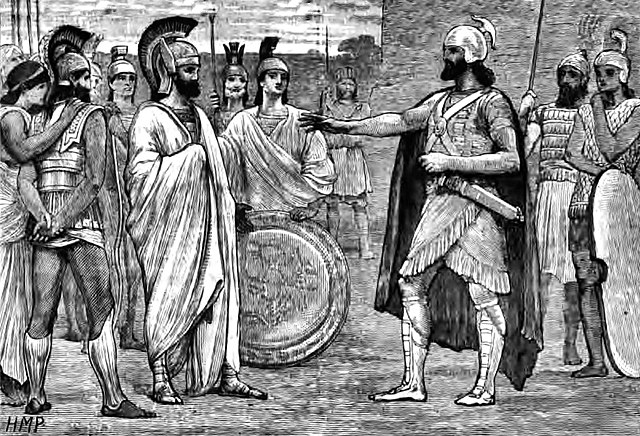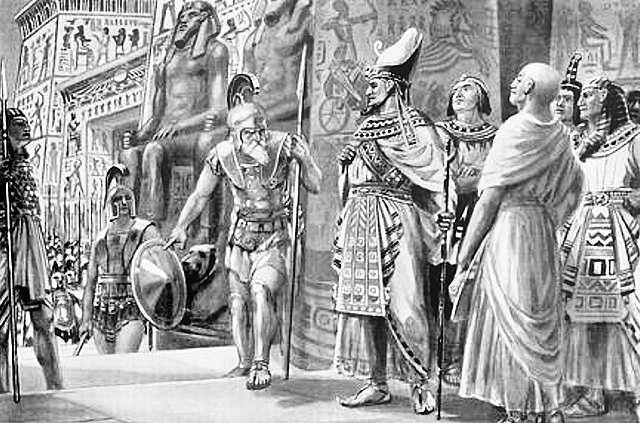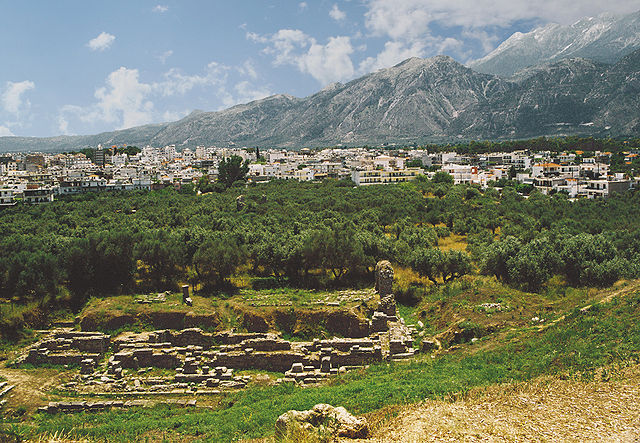Agesilaus II was king of Sparta from c. 400 to c. 360 BC. Generally considered the most important king in the history of Sparta, Agesilaus was the main actor during the period of Spartan hegemony that followed the Peloponnesian War. Although brave in combat, Agesilaus lacked the diplomatic skills to preserve Sparta's position, especially against the rising power of Thebes, which reduced Sparta to a secondary power after its victory at Leuctra in 371 BC.
Meeting between Spartan king Agesilaus (left) and Pharnabazus II (right) in 395 BC, when Agesilaus agreed to remove himself from Hellespontine Phrygia.
Tens of thousands of Darics (popularly called "archers"), the main currency in Persia, were used to bribe the Greek states to start a war against Sparta, so that Agesilaus would have to be recalled from Asia.
Agesilas (center), with Athenian general Chabrias (left), in the service of Egyptian king Nectanebo I, Egypt.
Xenophon's Agesilaus.
The history of Sparta describes the history of the ancient Doric Greek city-state known as Sparta from its beginning in the legendary period to its incorporation into the Achaean League under the late Roman Republic, as Allied State, in 146 BC, a period of roughly 1000 years. Since the Dorians were not the first to settle the valley of the Eurotas River in the Peloponnesus of Greece, the preceding Mycenaean and Stone Age periods are described as well. Sparta went on to become a district of modern Greece. Brief mention is made of events in the post-classical periods.
Same view but rotated more to the northern side of the ruins.
Sparta seen from Therapne
Pyrrhus' Siege of Sparta, 272 BC, by François Topino-Lebrun (1792)
Gythium, built on the site of the ancient port of Sparta








